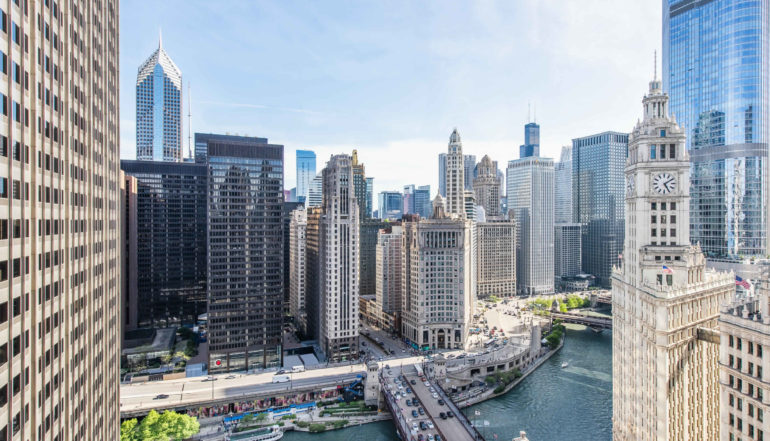
Modernisation
Would it be fair to trust human lives to an ageing or obsolete technology? You know the answer.
HAHNE values your investment and takes care of the same for you. Sometimes, when maintenance costs spiral due to wear out, there is unavailability of older spare parts, or when benefits of new technology are too good compared to the older installation which have sophisticated safety devices, it is better to go for modernization.
HAHNE gives you the German edge here with its expertise of modernising lifts across the world. Hahne offers taylor-made state of the art lifting solutions complying with all the latest standards, regulations and norms.
You get the best of current technology, be it energy efficient regenerative drives to LEED approved illumination, from sophisticated cabins to indulging operating panels. All of this right in your very own existing piece of real estate!
The Key Benefits of Lift Modernisation
An old lift does not necessarily need replacing in its entirety and, in fact, doing so may be extremely difficult due to the design or layout of the existing lift installation. Instead, you can have a lift ‘modernised’. What does this entail? Allow us to explain…
Lifts which are properly serviced and maintained can last decades and tend to have a very long life cycle. Lifts need partial or complete upgrade every 10 to 15 years depending on upkeep, usage and technology.
How a lift modernisation works…
The lift modernisation process involves the replacement of obsolete components with their modern equivalents. In addition to this, new features are added, that were not available when the lift was originally installed. This results in a ‘new’ safer lift, that not only complies with the latest legislation and standards, but also offers improved reliability, enhances traffic flow within the building and has superior finish.
Why should I modernise my lift?
- Improving performance and traffic flow
- Replacement of the drive unit, gearbox and control system of your elevator for a faster elevator with a smoother ride
- Implementation of an ‘intelligent’ control system offering improved traffic flow within the building
- Replacement of old, unreliable components reducing running costs and downtime in the event of regular elevator failure
- Greater added value and aesthetics for the building
- Possible upgrades in the area of the landing doors, lighting, surfaces and mirrors in the elevator car, adding video surveillance
- Conforming with the latest standards and regulations
- Comply with new legislation on disabled access, as well as health and safety without completely replacing the elevator
Hahne offers solutions conforming
- BS 5655:2005 Part 11/Part 12 -Code of practice for the undertaking of modifications of electric/hydraulic lifts
- BS EN 81-80:2003 – Rules for the improvement of safety of existing passenger and goods lifts – providing framework for upgrading existing lifts ensuring the equivalency to modern lifts for passengers and service engineers alike
- BS EN 81-82:2013 – Rules for upgrading existing lifts for persons with disability – providing guidance to building owners and lift service providers, addressing where additional measures may be required to improve the accessibility of the lift and the access to each level of the building.
- CEN TS 81-83:2009 – Rules for upgrading existing lifts improving the resistance against vandalism – providing guidance to building owners addressing additional security or other measures for protection against the risk of vandalism – addressing additional protective measures against deliberate acts, which may be resulting in equipment damage or injury
- BS 7255:2012 – Code of practice for safe working on lifts
- Possible audition of lifts when applying these standards – providing corrective actions for progressively and selectively improvements of the level of accessibility, safety and safe-working environment of existing lifts towards a modern lift equivalent – adding features meeting the needs of disabled users – latest legislation changes:
– Voice announcements informing about travel direction and approaching floor level
– digitally displaying current position of the lift car
– large, tactile and/or braille push buttons and infra-red door detectors - Installation of emergency communication systems in case of an entrapment
What type of adjustments can be expected?
Lift modernisations come in all shapes and sizes, from:
- Component upgrades – a quick and cost-effective way for small, but decisive improvements to your lift These upgrades includes items such as fitting a handrail; installing a mirror to help wheelchair users negotiate entry and exit when turning space is limited; installing floor position indicator or a voice enunciator.
- Possible upgrades of the following elements
– fitting a handrail
– installing a mirror helping wheelchair users getting in and out of the car within limited turning space
– installing floor indicators or voice announcements - Systems modernisation – improving the performance of your lift by updating entire systems, for example the emergency communication devices, electrics, lifting or door systems
- Full replacements – completely removing your old lift and installing a brand new one in your building’s existing lift shaft.
